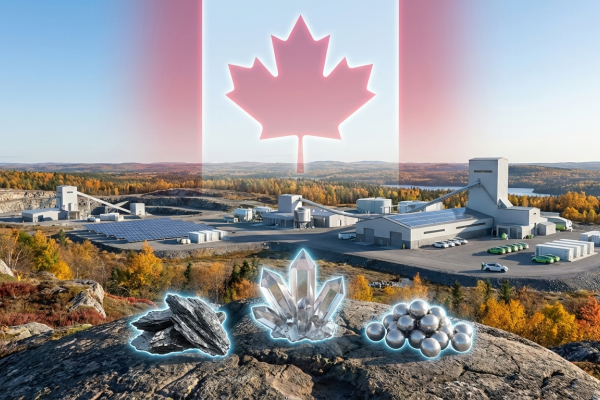July 22nd, 2022 | 12:14 CEST
Netflix, Amazon, BrainChip - AI drives growth
Our future is connected and increasingly interactive. Streaming providers like Netflix are personalizing content thanks to machine learning systems, but the Company is running out of users. Meanwhile, Amazon's voice assistant Alexa is up and running. At its developer conference two days ago, Ambience Intelligence announced for the first time that Alexa would take over digital assists in the smart connected home in the future. In order for Alexa to become an independent learning entity in the first place, companies like BrainChip are creating just the right human-machine interface technologies. And smart home is just a small part of the huge AI growth market with smart neuromorphic chip technologies.
time to read: 6 minutes
|
Author:
Juliane Zielonka
ISIN:
NETFLIX INC. DL-_001 | US64110L1061 , AMAZON.COM INC. DL-_01 | US0231351067 , BRAINCHIP HOLDINGS LTD | AU000000BRN8
Table of contents:

"[...] In Canada, there is $1.75 of debt for every dollar of disposable income - and that was true even before the pandemic. [...]" Karim Nanji, CEO, Marble Financial
Author
Juliane Zielonka
Born in Bielefeld, she studied German, English and psychology. The emergence of the Internet in the early '90s led her from university to training in graphic design and marketing communications. After years of agency work in corporate branding, she switched to publishing and learned her editorial craft at Hubert Burda Media.
Tag cloud
Shares cloud
Netflix: Subscriber numbers slump despite AI ads for new users
US streaming service Netflix is not having an easy time these days. In the second quarter of 2022, the streaming service lost 970,000 subscribers. The declines are happening mostly in the US, Canada and Europe. The stock price rose 5.6% this week as user losses were less than expected. But over the year, the stock price is down 66%. Future growth opportunities are subdued for a variety of reasons. Revenue growth is expected to slow steadily, and profitability metrics are expected to weaken.
A first reason is the nature of the business model. According to Warren Buffett, it falls into the classification of "commodity type businesses." A business that provides generic services or products and offers only price as the main reason for consumers to buy. This includes airlines as well as car manufacturers. Netflix earns its money with its subscription business models: Basic, Standard and Premium, and thus offers its customers access to series and movies on the streaming platform.
That makes Netflix identical to Disney Plus, Amazon Prime, Hulu and more. So it can only stand out from its competition through unique content. Since 2013, Netflix has been developing its own content under the "Netflix Originals" brand. This label is now the most important strategic asset for the Company.
Another reason is the increased cost of living in the US, Canada and Europe. The population is facing skyrocketing energy prices, just like industrial companies. The Consumer prices rose by 8.6% in the eurozone compared with the previous year. Anyone who can saves first where they can do without. And most of the time, subscriptions to everything from entertainment to sports fall victim to the red pen. People remember the good old library and instead watch inexpensive YouTube videos with commercial interruptions.
The third reason is the current Netflix business model. The Company can mitigate user decline by offering a low-budget option that is refinanced by ad breaks. Using machine learning, Netflix can optimize video and audio encoding, adaptive bitrate selection, and its in-house content delivery network. It drives ad spend on other platforms, channel mix, and its ad creative to help us find new members who like Netflix.
So, while initial AI systems are being deployed, so far, it is only for external user acquisition. Internally, it may be an opportunity for the US company to offer its own ad-supported package. The risk is that previous users will downgrade their subscriptions, and thus less money will be flushed into the coffers of the US. Netflix generated over USD 29.6 billion in 2021, with an operating income of over USD 6 billion and a net income of over USD 5 billion. As of 2021, Netflix has 221 million paying members worldwide.
Amazon: AI Alexa morphs into human-machine interface
While Netflix users are increasingly drawn to enjoying AI-driven program content, Amazon is already another step ahead. While the Amazon voice assistant Alexa is entertainingly spying on its users, the system is continuously learning - and always with a commercial interest, disguised as a sympathetic and understanding concierge. Some may remember the humanoid robot Ash from the 1979 Alien movie, who risked the lives of the crew in complete admiration for the alien species.
Amazon is igniting the next stage for the Alexa voice assistant, networking the static knob eavesdropper with other devices for digital interactions. Called "Ambient Intelligence," users will experience its true spatial wonder in the future. Ambient Intelligence means that the underlying AI is available everywhere and helps people when needed. It learns to anticipate needs and retreats when it is not needed. No more turning it on and off. The system learns on its own through training from its users.
"Some companies have a vision for technology rooted in phone apps or a virtual reality headset," said Aaron Rubenson, VP of Amazon Alexa, at the Amazon Alexa Live Event on July 20, 2022. "Our goal is to build technology that enables customers to spend more time looking at the world and interacting with people."
For example, Alexa's self-learning mechanism automatically corrects several million errors per week - both customer errors and errors in its own natural language understanding (NLU) models. Disguised as a sympathetic house butler, Amazon, through Alexa, turns its customers into volunteer guinea pigs for training its own AI.
BrainChip: Human-machine interface technology thanks to neuromorphic chip systems
The near future enables AI-driven technology for home use and daily needs. Elon Musk is trying his hand at implementable chips in living beings with the Company Neuralink and seems to have taken it a step too far. His co-founders have left the Company and are looking after their own projects instead of following the visionary's cyborg vision. It doesn't have to be the implant in a living body, either.
A smart version is to create a brain-like learning system on the chip itself. BrainChip Inc. is a leading provider of neuromorphic computing solutions, a type of artificial intelligence inspired by the biology of the human neuron. The Company's revolutionary new spiking neural network technology can autonomously learn, evolve and link information just like the human brain. That is because AI systems like Alexa need smart hardware to create the capacity for autonomous learning spaces. Neuromorphic chip systems are needed precisely at this human-machine interface, which Alexa developers announced at the conference two days ago. Other areas of application include robotics, automotive, telecommunications and gaming, in addition to infotainment such as Netflix and Amazon Alexa.
BrainChip is currently partnering with NVISO, a human behavioral analytics company. NVISO provides solutions for various use cases, including smart living, smart mobility, and smart health. NVISO will launch an Evaluation and Software Development Kit (EVK and SDK) optimized for neuromorphic processors and targeted at innovators looking to deploy AI-driven human-machine interfaces to detect real-time human behaviour at the edge of the system. The two companies will jointly commercialize the EVK and SDK, and an initial evaluation with a semiconductor manufacturer in Japan has already begun. The superior BrainChip technology has won NVISO over.
"NVISO's first neuromorphic-optimized EVK was realized in record time and has exceeded all expectations," said Tim Llewellynn, CEO of NVISO. "BrainChip has created an excellent development environment for AI software specialists like NVISO, and the maturity of their tools shows why they are the first commercial neuromorphic processor IP on the market." The future holds a lot in store for innovative investors who back pioneers like BrainChip. That is because BrainChip enables effective edge computing capabilities that can be universally deployed in real-world applications such as connected cars, consumer electronics and industrial IoT.
So far, the delicate AI attempts of Netflix work on external platforms through advertising for the streaming service to win new customers on other channels. Netflix uses machine learning to increasingly personalize its offering based on the content it watches for its users, making it more attractive. Amazon is a big step ahead: the Amazon Alexa developer conference kicked off the first ambient intelligence features. Alexa takes over actions in the room with other devices and increasingly networks itself intelligently. In order for such systems to be brought to virtual life at all, smart technology such as that offered by BrainChip is required. The basic framework for future smart self-learning systems is brought to life in the first place thanks to neuromorphic chip technology. And this opens up a huge market for innovative investors in an increasingly connected world of smart health, smart living and smart driving.
Conflict of interest
Pursuant to §85 of the German Securities Trading Act (WpHG), we point out that Apaton Finance GmbH as well as partners, authors or employees of Apaton Finance GmbH (hereinafter referred to as "Relevant Persons") may hold shares or other financial instruments of the aforementioned companies in the future or may bet on rising or falling prices and thus a conflict of interest may arise in the future. The Relevant Persons reserve the right to buy or sell shares or other financial instruments of the Company at any time (hereinafter each a "Transaction"). Transactions may, under certain circumstances, influence the respective price of the shares or other financial instruments of the Company.
In addition, Apaton Finance GmbH is active in the context of the preparation and publication of the reporting in paid contractual relationships.
For this reason, there is a concrete conflict of interest.
The above information on existing conflicts of interest applies to all types and forms of publication used by Apaton Finance GmbH for publications on companies.
Risk notice
Apaton Finance GmbH offers editors, agencies and companies the opportunity to publish commentaries, interviews, summaries, news and the like on news.financial. These contents are exclusively for the information of the readers and do not represent any call to action or recommendations, neither explicitly nor implicitly they are to be understood as an assurance of possible price developments. The contents do not replace individual expert investment advice and do not constitute an offer to sell the discussed share(s) or other financial instruments, nor an invitation to buy or sell such.
The content is expressly not a financial analysis, but a journalistic or advertising text. Readers or users who make investment decisions or carry out transactions on the basis of the information provided here do so entirely at their own risk. No contractual relationship is established between Apaton Finance GmbH and its readers or the users of its offers, as our information only refers to the company and not to the investment decision of the reader or user.
The acquisition of financial instruments involves high risks, which can lead to the total loss of the invested capital. The information published by Apaton Finance GmbH and its authors is based on careful research. Nevertheless, no liability is assumed for financial losses or a content-related guarantee for the topicality, correctness, appropriateness and completeness of the content provided here. Please also note our Terms of use.




